This post may contain affiliate links. Please read our disclosure policy. As an Amazon Associate, I earn from qualifying purchases.
This einkorn sourdough bread is made with 100% all-purpose einkorn flour, which gives you a light-colored loaf with a soft, tender crumb and rich, buttery flavor. It’s naturally fermented for a mild tang and doesn’t require any kneading, just gentle folds and time to rest. No special flour blends, no extra steps. Just the simple beauty of einkorn at its best.
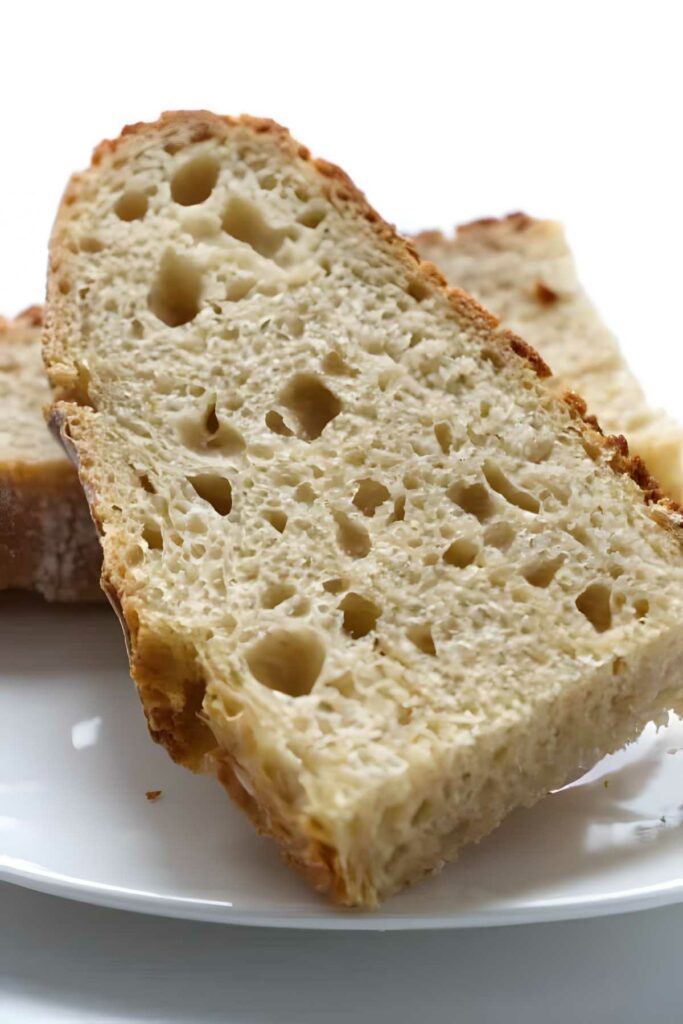
New to sourdough? You might want to start with my Dutch oven sourdough bread made with regular all-purpose flour.
Here’s Why This Einkorn Sourdough Bread Recipe Works
No kneading needed: Einkorn’s delicate gluten doesn’t strengthen with kneading, so a few folds and some rest time are all it takes.
Flexible timing: A long, slow ferment in the fridge gives you scheduling wiggle room and a deeper sourdough tang.
Straightforward ingredients: Just four basics; starter, water, all-purpose einkorn flour, and salt. No blends or fillers, so nothing masks einkorn’s naturally rich flavor.
Rich, complex flavor: Einkorn brings a naturally buttery, nutty taste that stands out in every slice.
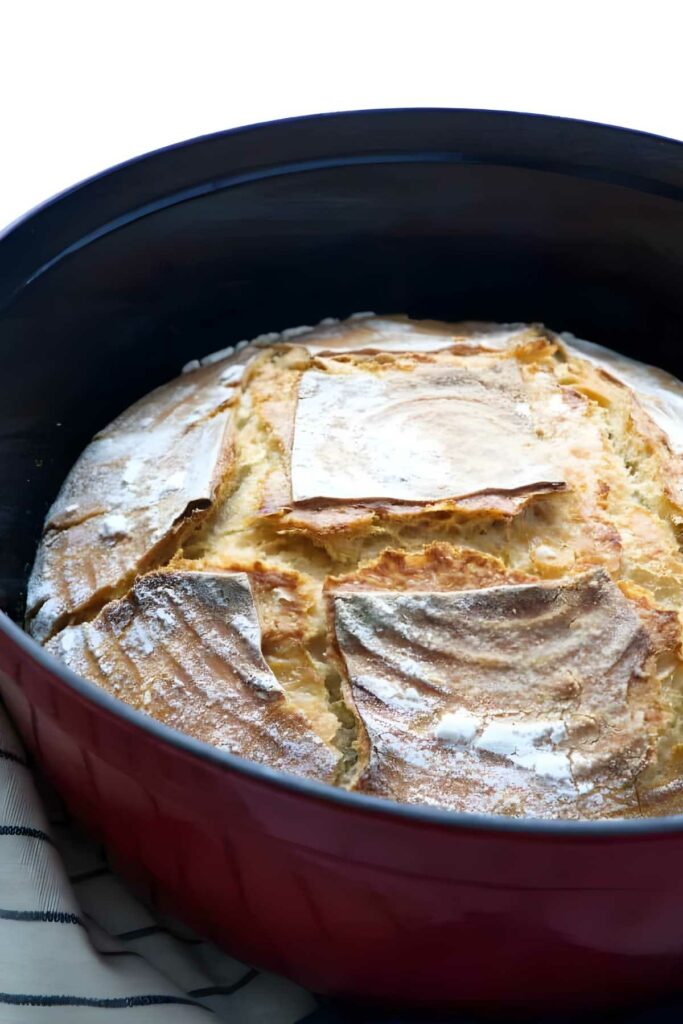
Recipe Tips
Use a mature starter: Your sourdough starter should be at its peak; bubbly, active, and recently fed, for the best rise and flavor.
Wet your hands: Einkorn dough is naturally sticky. A little water on your hands makes folding and shaping much easier.
Skip the countertop flour: Adding extra flour can weigh the dough down. Use wet hands and a damp surface instead to keep the texture light.
Proof by look, not the clock: Einkorn ferments faster than modern wheat. Watch for signs of rise instead of relying solely on time.
Flour your basket: A 50/50 blend of rice flour and einkorn flour helps prevent sticking. Rice flour doesn’t absorb as much moisture, so it creates a better barrier between the dough and the basket.
Choose your hydration level: This recipe gives you a range of water amounts so you can adjust based on your comfort with shaping sticky dough. Less water makes the dough easier to handle; more water gives you a softer, airier crumb. If you’re feeling confident, you can even add an extra tablespoon or two for an even lighter texture, just expect a looser dough that’s a bit more challenging to shape.
Storage: This bread keeps well at room temperature for 2 to 3 days. For longer storage, slice and freeze.
Einkorn Sourdough Questions, Answered
No problem. You can still make this bread even if your sourdough starter is made with regular flour. You have two options:
Option 1 (Quick and easy): Use your regular starter as-is. Feed it with your usual wheat flour, then use it in the recipe. Your loaf will be made with 100% einkorn flour except for the bit of wheat flour from the starter. It still works beautifully.
Option 2 (Gradual switch): Transition your sourdough starter to einkorn flour by feeding it several times with einkorn. Each feeding increases the percentage of einkorn in the starter:
1st feeding: 50% einkorn
2nd feeding: 75% einkorn
3rd feeding: 87.5% einkorn
4th feeding: 93.7% einkorn
5th feeding: 96.8% einkorn
This works because each feeding removes half the starter and replaces it with fresh einkorn flour and water. After four or five feedings, your starter is nearly all einkorn.
In the end, either method will give you a great loaf. It just depends on how “pure” you want your einkorn to be.
Yes! You can absolutely use a loaf pan if you’d prefer a more classic sandwich-style shape. In fact, using a pan makes the dough a bit easier to manage—especially since einkorn is naturally soft and sticky.
With a free-form or “hearth-style” loaf, the dough needs enough structure to hold its shape on its own. But in a pan, the sides offer support, so you don’t have to worry as much about the dough spreading out or flattening during the final proof or bake.
It’s a great option if you’re new to working with einkorn or just want a tidy loaf for slicing.
Want to try another ancient grain? Check out my spelt sourdough bread.
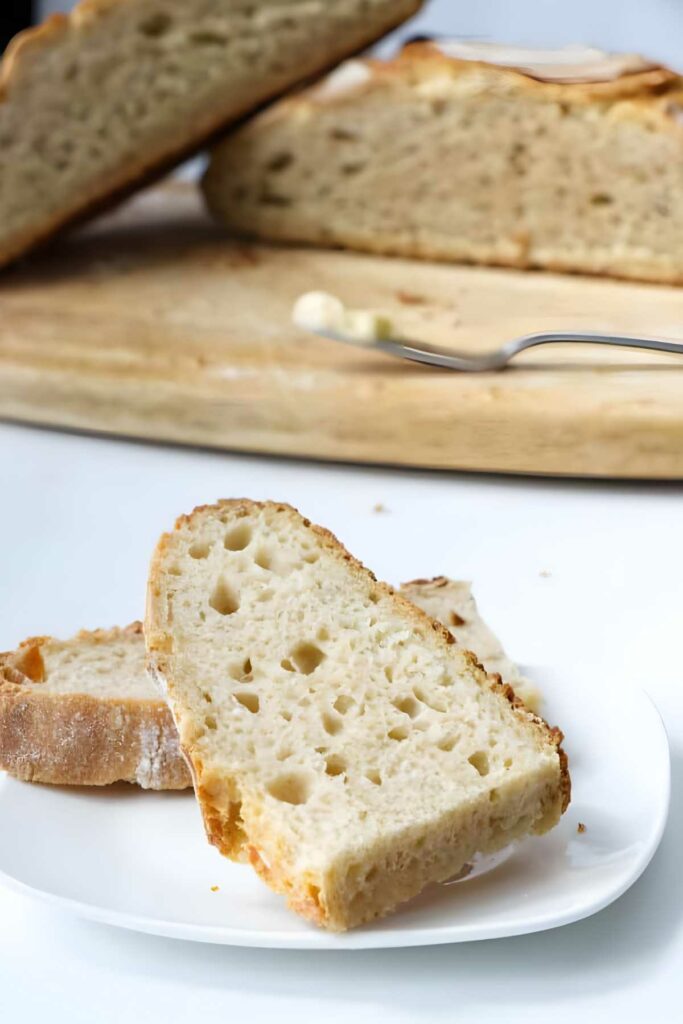
Sourdough Bread with Einkorn Flour
Einkorn sourdough dough can be a little tricky to handle. It is soft, sticky, and not always easy to shape. But the effort pays off. Using 100% all-purpose einkorn flour will give you a golden, crusty loaf with a tender crumb and deep, rich flavor.
Once you get the feel for it, this is the kind of bread that earns a regular spot in your baking routine.
Pin this now to find it later!
Pin It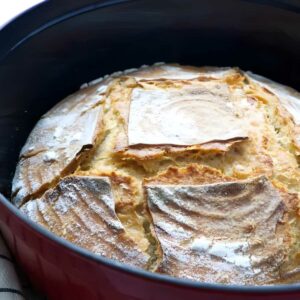
Sourdough Einkorn Bread
If you make this recipe, please leave a star rating and comment.
Ingredients
- ¾ cup active sourdough starter, 180 grams, see notes
- 1 ⅔ to 1 ¾ cups warm water, 392 to 413 grams
- 5 cups all-purpose einkorn flour, 600 grams
- 2 teaspoons salt, 12 grams
Instructions
- Mix the dough: In a large bowl, stir the starter into the warm water until fully dissolved. Add the flour and salt, and stir until it forms a rough, shaggy dough.
- Stretch and fold: After mixing, let the dough rest for 10 to 15 minutes. Then, with wet hands, grab one side of the dough, stretch it up, and fold it over to the opposite side. Rotate the bowl and repeat this motion 3 to 4 times, folding from a different side each time.Let the dough rest another 10 to 15 minutes, then repeat the stretch and fold process once more.
- Expect a sticky dough: The dough will be wet and sticky at this stage, that’s normal. Don’t add extra flour; it will make the bread dense. Wet your hands to keep the dough from sticking as you work with it.
- First rise (bulk fermentation): Let the dough rise at room temperature for 3 to 6 hours, until it increases by about 50% to 75%. This is your bulk fermentation stage.After the bulk rise, you’ll shape the dough and then do an optional cold proof (see below) to fit your schedule and boost flavor.
- Shape the dough: Turn the dough out onto a work surface and gently shape it into a round. If you're using a loaf pan, shape the dough into a log instead.
- Final proof: Place the shaped dough into a well-floured proofing basket or loaf pan. Cover and let it sit at room temperature for 1 to 2 hours to start the final proof, then transfer it to the fridge overnight or up to 15 hours.
- Einkorn sourdough should rise by about 50% to 75% before baking. Don’t let it double. If it hasn’t reached that after the cold proof, let it finish rising at room temperature. Keep an eye on it and move it to the oven once it hits that 50–75% mark to avoid over-proofing.
- Bake: Preheat your oven to 450°F. When it’s hot, gently tip the loaf into a Dutch oven or onto a baking sheet. Score the top with a sharp knife.If using a Dutch oven: cover for the first 30 minutes. Then remove the lid and bake for another 15–20 minutes, until the crust is golden and the loaf sounds hollow when tapped.
Notes
Nutrition
Nutrition information is automatically calculated, so should only be used as an approximation.
 Like this recipe? Rate & comment below!
Like this recipe? Rate & comment below!
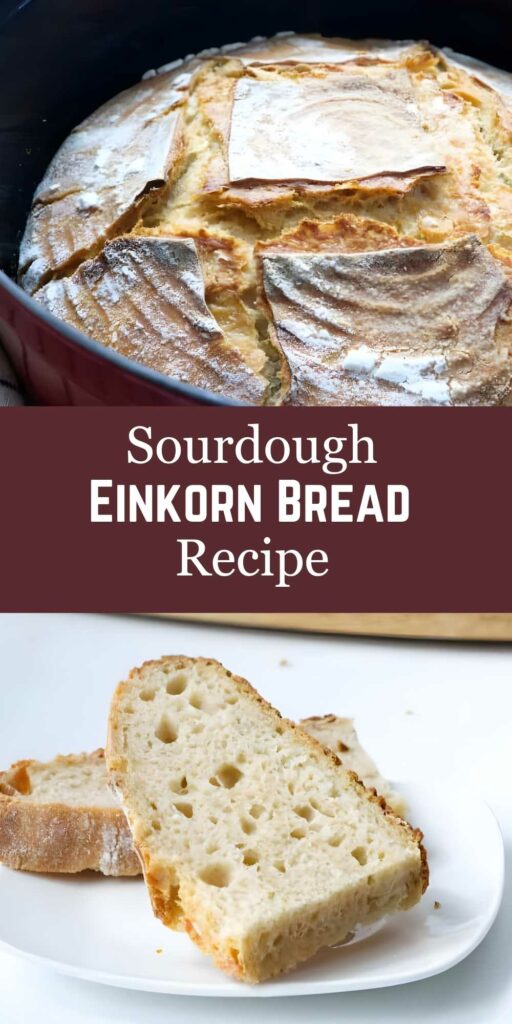
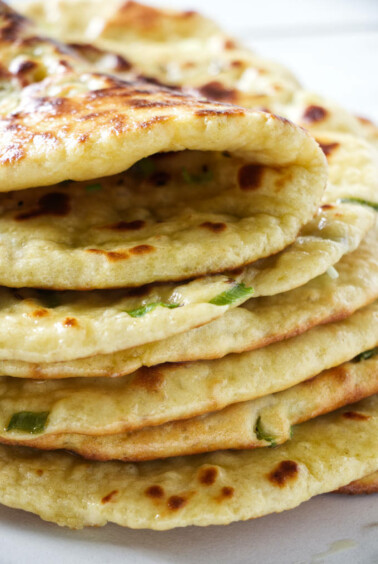
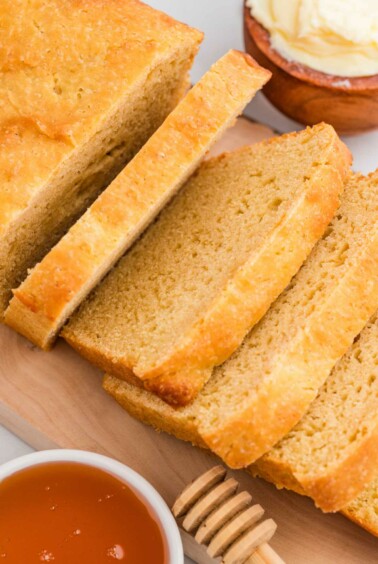
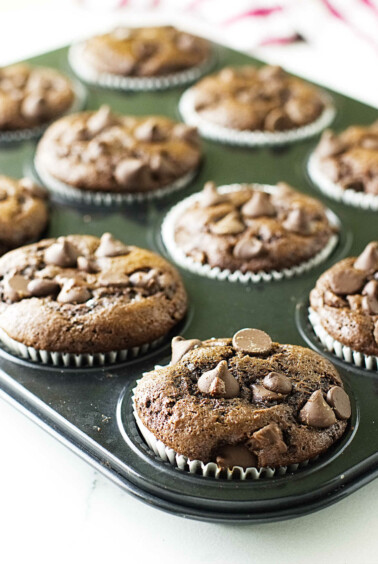
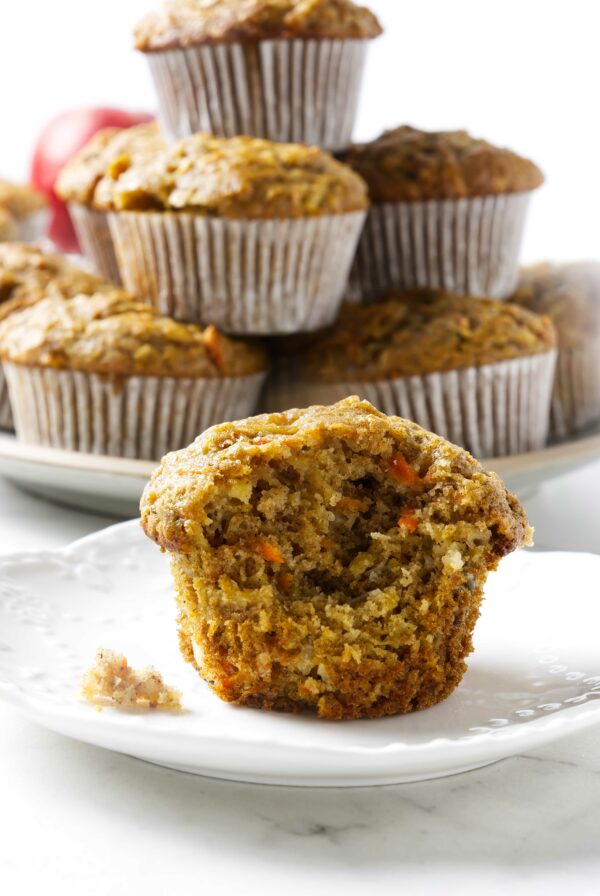
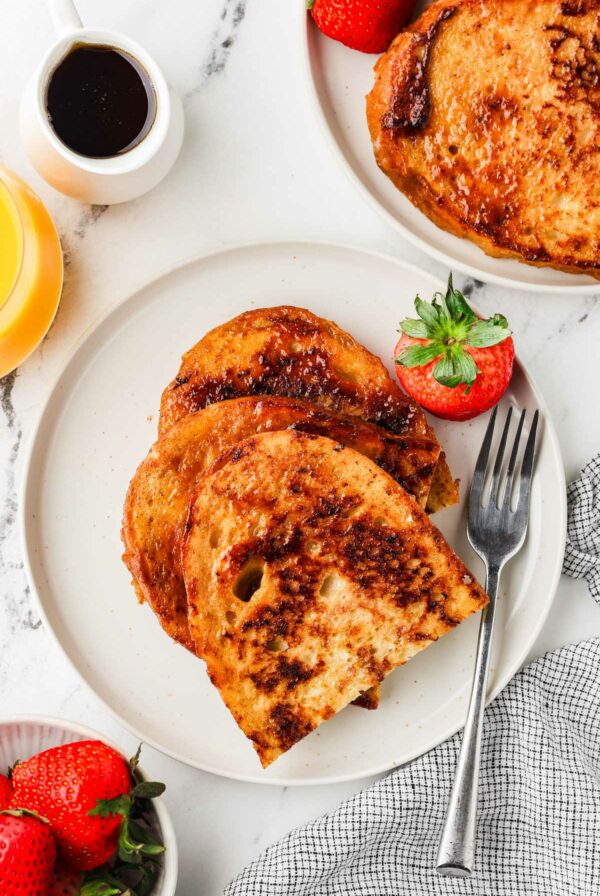
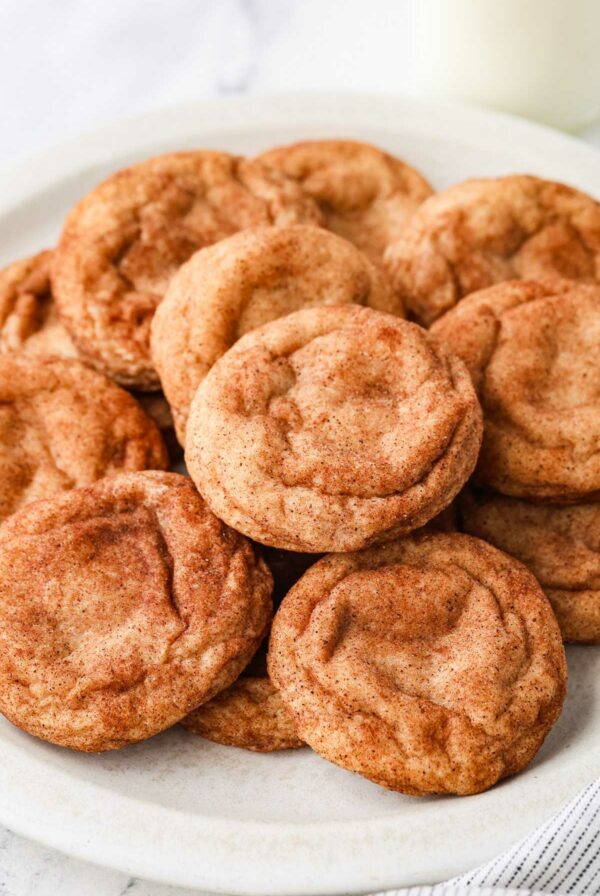
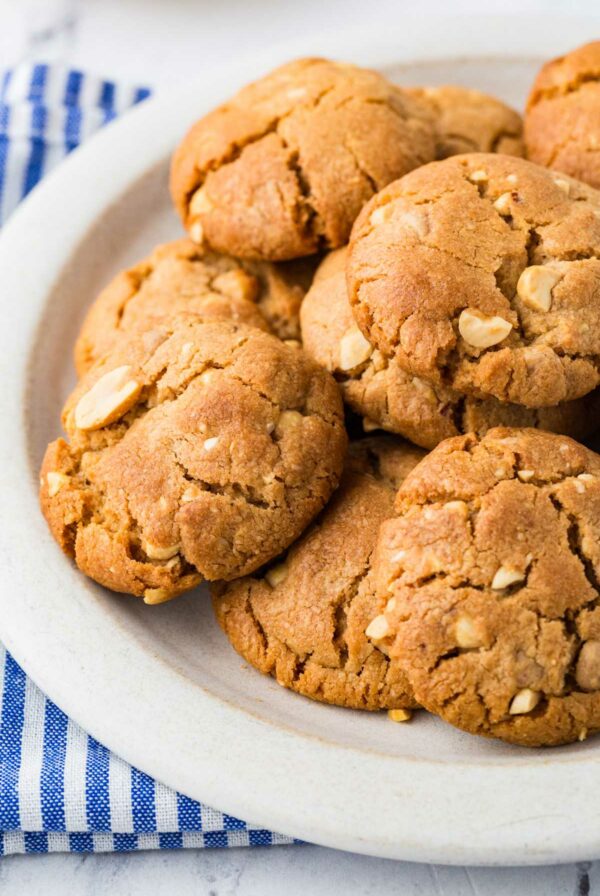










I’ve made the einkorn bread a few times now. Yesterday I tried letting it rise outside of the refrigerator for the first time. . I proofed it in a banneton P, it rose well, but and it stuck to the basket in several places. Once i put it in the the Dutch Oven, the loaf spread out. I baked it anyway and it was delicious But it didn’t have much rise. . The crust was perfect. My sourdough starter consisted of both einkorn and brown rice flour. Very bubbly. I substituted s out 1 cup of brown rice flour for the einkorn.
I weighed everything and put the full amount of water. Do you think this is what caused my loaf to first stick while proofing and then spreading out?
Thanks for so advice.
If you don’t prep the banneton well then it will stick. Give the banneton a light spray of water then dust it with a flour blend of 50% rice flour and 50% einkorn flour. I found that using 50% rice flour is key.
It sounds like you may have let the bread over-proof which would have caused it to spread out and flatten. The rice flour may have also played a role in the flatter loaf.
Hello. Can’t wait to try this recipe. I would like to make this as a loaf for sandwich style bread. Do you know the size of the loaf Pan this would fit in? Or maybe I need two?
You can put it in two 4×8 pans or one 8-1/2 x 4-1/2 pan. If you use the 8-1/2 x 4-1/2 pan you will have a little bit of dough leftover to make a couple of rolls 😉
Having only made The Perfect Loaf’s beginner sourdough prior to this, I used your recipe to experiment with einkorn (mostly because you gave fewer caveats about how difficult einkorn is!).
What a sticky dough it started out as, and even though I used the lower end of the hydration, it was still sooo sloppy when I turned it out for Step 5. The only way of working with it was wet hands. After folding it (probably far too often) as the only means of getting it to stay together, I eventually managed to get it into a banneton without falling apart. Oh, did I fear for that banneton. But, I was pleasantly surprised the next morning to find that it turned out with minimal sticking, and it actually scored perfectly compared to the sloppy rough edge I consistently get with TPL’s recipe. Somehow, I got tension?! It was still very sloppy going into the dutch oven, but it rose well, I think the crumb looks pretty similar to yours, perhaps a bit denser, and it tastes delicious!
Just wanted to share my experience in case anyone else gets to the super sloppy dough stage and is tempted to bin it (as I was). Thank you so much for the recipe 🙂
Thanks for the comment, Rebecca. I’m sure that will be very helpful. Wet hands is the best way I have been able to work with sticky dough as well.
Hi there,
New baker here. From what I understand; once dough is mixed, let rest 30 minutes total after folding, then choose to let rise on bench or OVERNIGHT in fridge.
If I chose overnight in step 4, then after taking out of fridge to turn the dough out and form ball to go into basket, I will go to next step 7 which is put in fridge again for another overnight rise, is that correct? 2 overnight rests?
Yes. You want to put it in the fridge if it rises overnight. The fridge slows the rise down so it will not rise too much while you sleep. The lengthened time will also give you the most benefits of fermentation. That said, you could still let the shaped bread dough rise on the counter. If you do that then it will take anywhere between 3 to 6 hours depending on the temperature and humidity in your kitchen.
The bread is delicious . What is the best wY to store this bread?
It is best to store sourdough bread in a breathable container. A paper bag works well or you can wrap it in a kitchen towel or keep it in a bread box. If you are going to store it for longer than 5 or 6 days then I recommend freezing it. You can freeze it whole or you can slice it into individual slices that you can just pop right into the toaster.
Hi! Can I let my loaf final rise in the dutch oven and then put it straight into the oven after the 10-15 hours are up?
Yes, you can do that. Some people have trouble with the bread keeping its shape when they do that though. Sometimes the bread spreads out more and isn’t as tall.
thank you!! I’ll try it next time!
keep us posted, would love to hear how it goes 🙂
Hi Bakers! How much time after feed n watering does it take to reach this point in ur instructions : “ Make sure the starter has been fed and is fully ripe or at it’s peak when you use it. “?? My starter is thicker n i feed w red whole wheat ( just ordered rye!). Thank you again!!
Oh this is a bit different for everyone. It depends on your starter and the weather/temperature in your kitchen. My starter will reach its peak within 3 to 4 hours in the summer and will take as long as 5 or 6 hours in the winter. Once you get to know your starter, it is easier to time your baking schedule. If you are just starting with sourdough baking it might take a while to get to know the pattern of your starter. You will probably even notice that it grows at different rates depending on what kind of flour you use to feed your little friend.
😉
I have whole grain einkorn and would like to try this recipe. Do you suggest any adjustments? Thanks.
This recipe does well with the whole grain einkorn. I use a bit more water when I make it with whole grain. I would recommend starting with the larger amount of water (1-3/4 cups or 413 grams)
I made this w ww einkorn n hubby said it’s my best yet! Yay! ( it’s only my 3rd bread ever!). Just bought grams scale and WHAT A DIFFERENCE THAT makes!! I had been using WAYyy too much flour just scooping it out of bad in measuring cup!! Weighed every ingredient precisely n did frig overnight rising. Dough was still sticky when went into preheated dutch oven. I sprayed a little water on top. Crust was perfect. I took it out at 45 mins. Once u open lid n lose steam, is it ok to put it back in oven for 5 more mins if its not done, or will that burn it without steam?? What tool do u use to tell if it’s done? I read it keeps cooking till its cut or cools. Thx
You’re officially a sourdough baker! ? Yep, you can put it back in the oven after you take the lid off. Bake it until it is nice and brown. If you want an exact measurement of how well it is done then an instant read thermometer will do the trick. If the center of the bread is at 190°F then it is completely baked. Another trick to check for doneness is to turn it over and thump the bottom. If the crust sounds “hollow” then that is a good sign that it is done. If you can wait until it is completely cooled down then the bread will finish cooking and will not be as moist in the center. I rarely can wait to let it cool and usually just break right into it while it is still hot and fresh out of the oven 😉
U r so sweet! I appreciate that as Im soo new to this n mostly wingin it! ?
?
Can the time for the second proofing in the fridge be reduced if if at room temperature to rise? If so by how much?
Yes, you can let it proof at room temperature. It usually takes 3 to 6 hours to proof but it will vary depending on how warm your kitchen is. Let it rise by a little over half. So for instance, if your bread dough was about 4 inches thick then let it rise to just over 6 inches. It doesn’t have to be exact, you just don’t want it to rise until it is doubled in size.
Can you blend in a bit of whole grain Einkorn flour?
Yes you sure can! The whole grain einkorn will absorb a bit more liquid so you may need to add a bit more water. Just add more water if the dough seems too dry, otherwise depending on how much whole grains you add, you may not need any further adjustments.